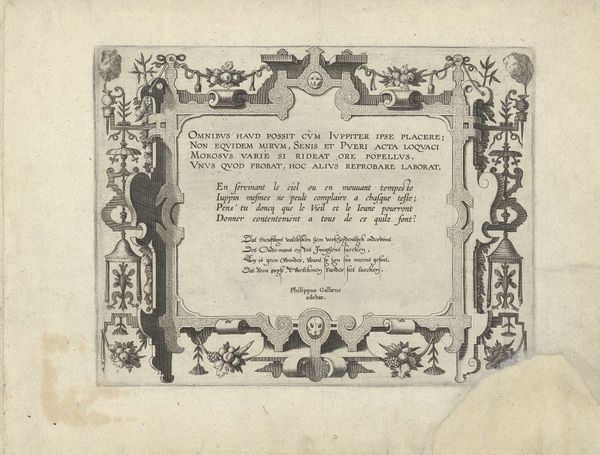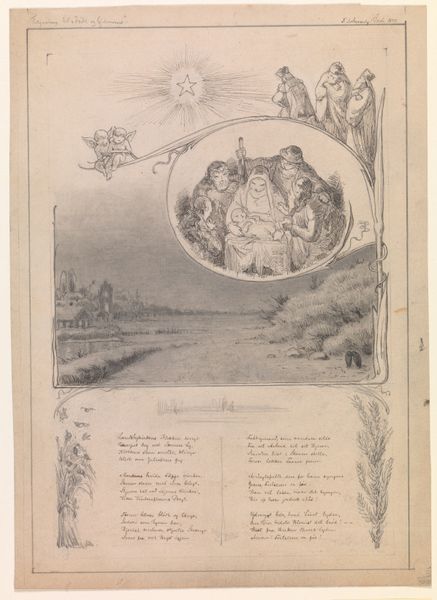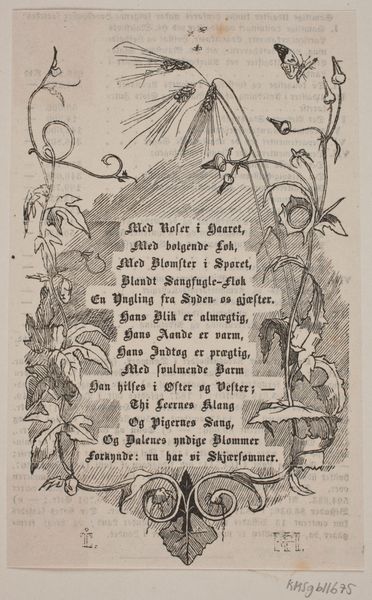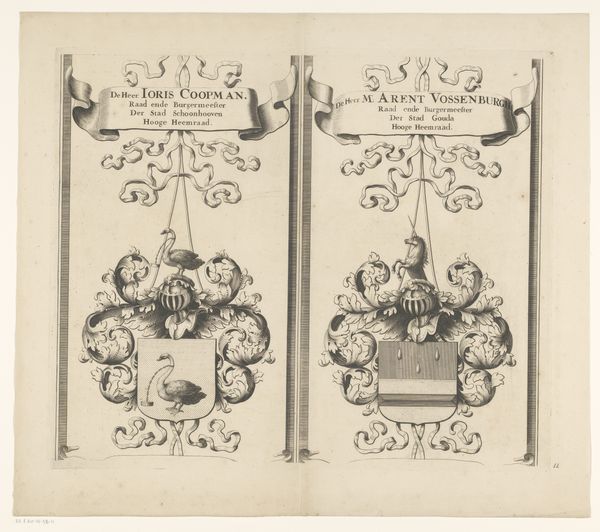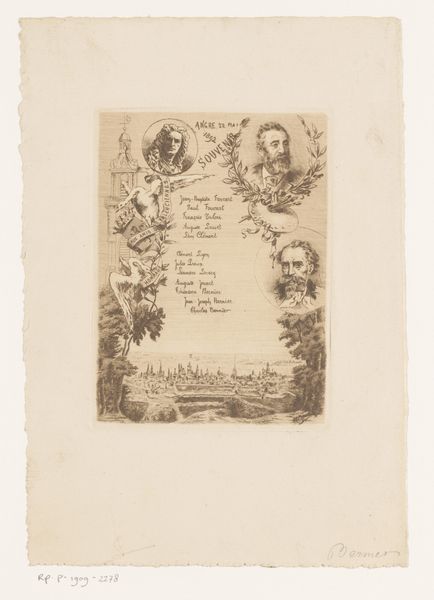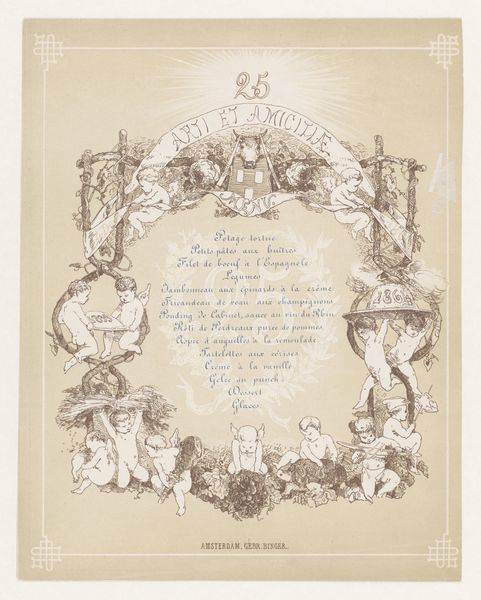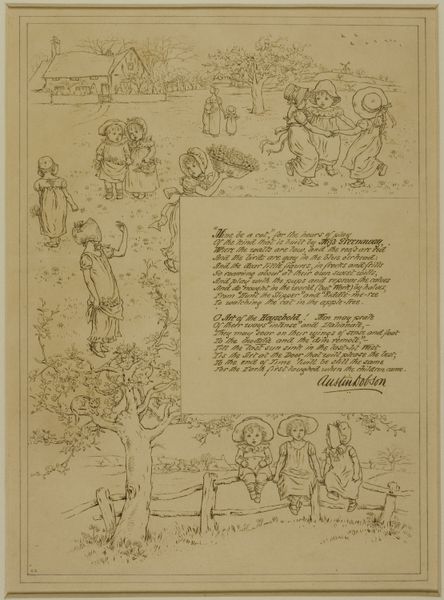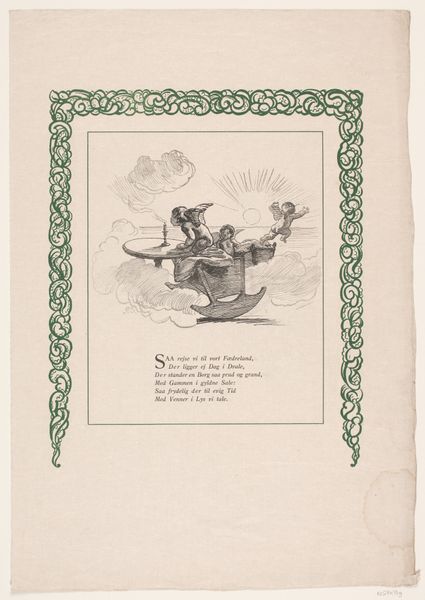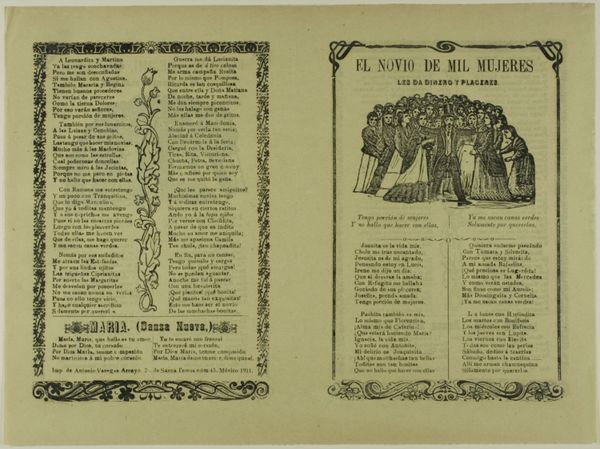
To omslag med slynget lænkeronament med dyr til "Halvhundrede Fabler for Børn" med skrift 1834
0:00
0:00
print, engraving
#
narrative-art
# print
#
figuration
#
folk-art
#
romanticism
#
line
#
decorative-art
#
engraving
Dimensions: 202 mm (height) x 255 mm (width) (bladmaal)
Curator: This captivating engraving before us, titled "To omslag med slynget lænkeronament med dyr til 'Halvhundrede Fabler for Børn' med skrift," was created in 1834 by Martinus Rørbye. It's held here at the SMK - Statens Museum for Kunst. Editor: It's striking! The density of interwoven creatures and foliage creates a wonderful sense of contained chaos, or perhaps dynamic balance. The stark lines really pop. Curator: Precisely. Rørbye's masterful use of line—a signature element of Romanticism—serves to delineate the complex, interwoven forms, creating a tapestry-like structure that speaks to the decorative arts tradition. The tight composition focuses the viewer’s eye, refusing to allow a restful escape. Editor: The menagerie of animals feels symbolic. What do these creatures signify? I detect foxes, bears, and what appear to be oxen... The animals, presented together with the interwoven foliage and lettering, almost form a medieval bestiary! Curator: The appearance is indeed quite evocative! The combination of text and image speaks to the oral traditions of fables. Within this intricate ornamentation, animals such as the bear embody strength, the fox cleverness, and so on, providing moral instruction embedded in popular understanding. Rørbye deftly intertwines cultural memory with natural forms, echoing and amplifying these established meanings for his intended audience of children. Editor: This really pulls into view the importance of the book and its potential impact on young minds being presented with these intricate patterns paired alongside tales of morals and folklore. There’s a naivete in some of the rendering of animals and their interlinking nature, making the piece evermore delightful! Curator: Absolutely. Rørbye captures a distinct synthesis here—marrying the formal elegance of line engraving with a warm sentimentality which characterizes so much 19th-century book illustration. The symbolic function is secondary only to the visual enjoyment derived from the composition itself. Editor: Indeed, it’s a testament to Rørbye's ability to seamlessly blend instruction with imagination. One lingers in the realm of forms, as if on the boundary of dream and awareness. Curator: Yes. A compact design offering expansive readings through its structured artifice.
Comments
No comments
Be the first to comment and join the conversation on the ultimate creative platform.
